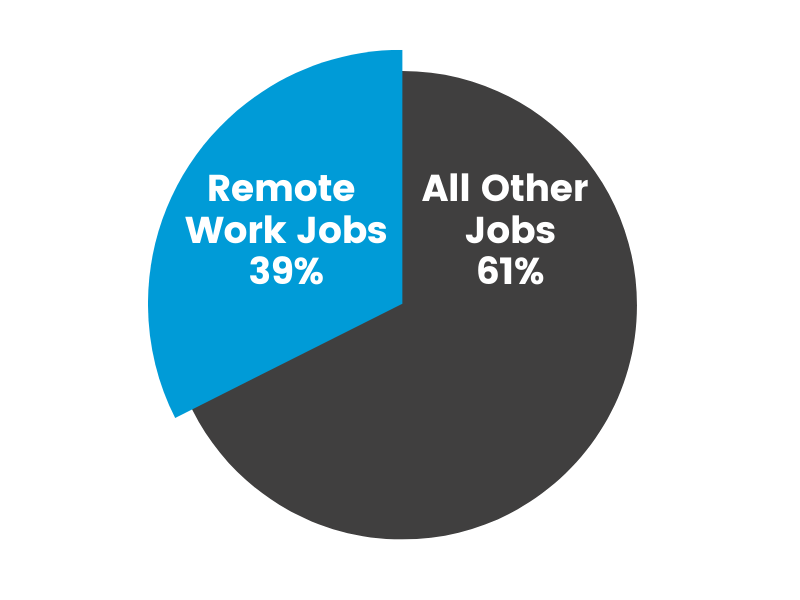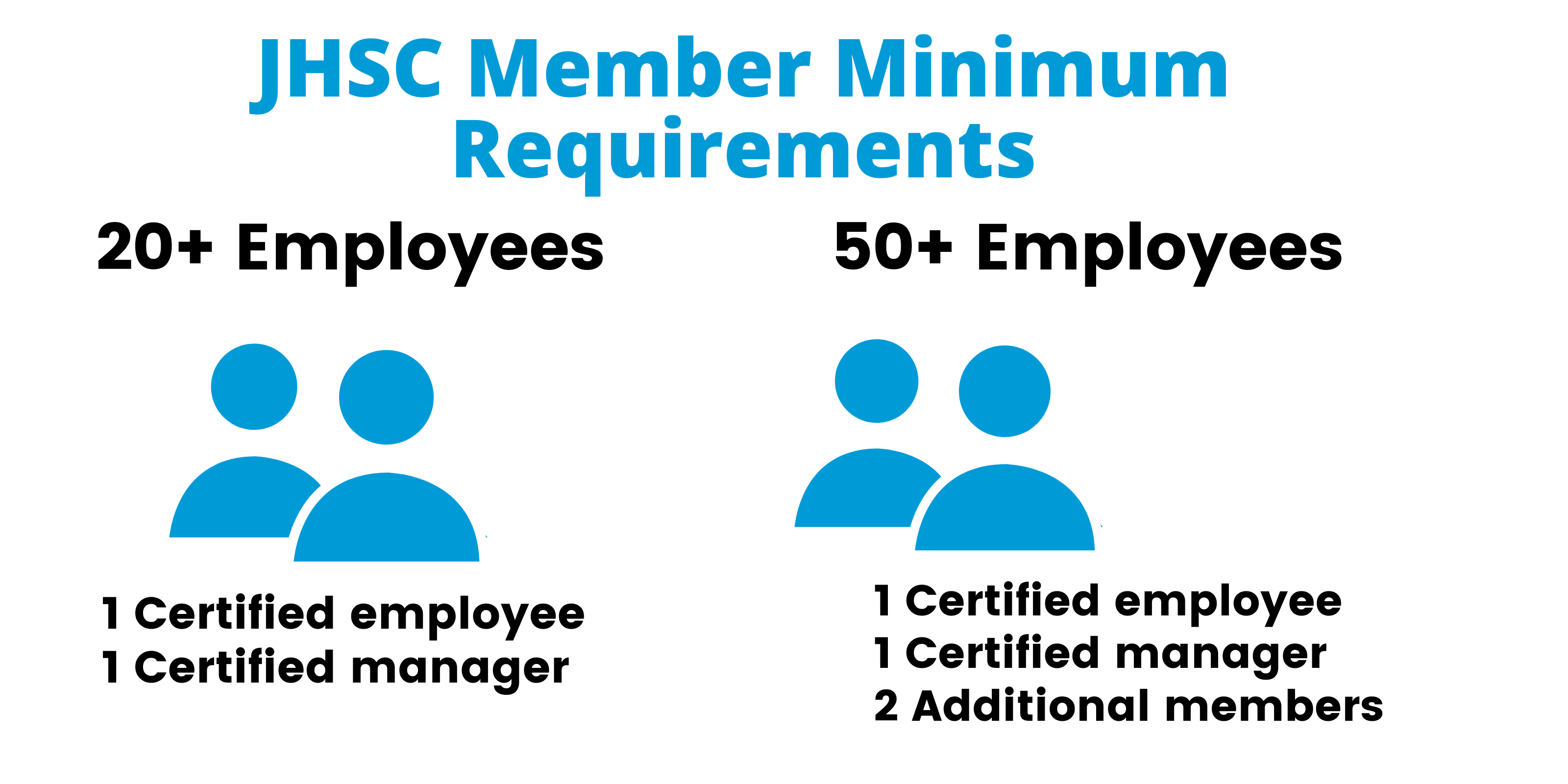Over the past year, remote work has become the norm for many of us, and it looks like it may continue that way.

Approximately four out of ten Canadians have jobs that can be done from home, and results from a recent Statistics Canada survey, suggest that many Canadians will continue working from home once the pandemic is over.
Remote work offers many benefits, but it also comes with a unique set of challenges. One of these challenges is ensuring the health and safety of remote employees.
While your Joint Health and Safety Committee (JHSC) is one of your greatest allies in achieving workplace wellbeing, the shift to remote work has left many organizations uncertain about how their JHSC should function in this new work environment.
Below are answers to the most common questions about JHSCs and remote work as well as some best practices if your JHSC members are working from home.
If employees are working remotely do I still need a JHSC?
In Ontario JHSC requirements outlined under Occupational Health and Safety Act (OHSA) apply even if your employees are working from home. This means that if you are a provincial employer in Ontario with 20 or more employees, you still need to have an active JHSC with at least two certified members (one worker employee and one management). If your organization has more than 50 employees, your JHSC needs at least two certified members (one worker employee and one management) and at least two additional members.
Learn more about JHSC member roles in our article Joint Health and Safety Committee (JHSC) Composition, Roles, and Responsibilities.
Are JHSC responsibilities different in a remote workplace?
Your JHSC plays a key role in your Internal Responsibility System (IRS) — the foundation of a healthy and safe workplace. Because remote work still has health and safety issues, it’s important to identify these issues and solutions to control them.
The role of your JHSC is to help raise awareness of these health and safety issues and help communicate them to the employer and employees.
Here are some of the duties your remote JHSC must continue to perform:
- Conduct inspections (if possible)
- Identify hazards
- Hold regular meetings
- Discuss safety concerns raised by employees
- Develop recommendations to address hazards
Do JHSCs need to carry out monthly inspections for remote workplaces?
The answer to this will depend on how your organization is currently operating. Ask yourself, “does anyone visit the physical workplace?” If the answer is yes, then a member of your JHSC must continue to perform a monthly inspection of this workplace.
The majority of your employees might work remotely, but if there are instances in which an employee or non-employee would be at your workplace, you need to ensure your location is safe and compliant.
The inspection should be performed by a certified JHSC member, if possible, and they should follow inspection requirements, including documenting their findings, recording inspection results, and bringing these results back to the committee to make recommendations. Read more about how your JHSC should conduct physical workplace inspections.
If your organization has gone fully remote and no longer rents or owns a physical location, then consider partnering with your JHSC to develop an inspection process for remote employees, as we discuss below.
Best Practices for Remote JHSCs
If your employees are working from home, it can be more challenging for the committee to fulfill its responsibilities. The following best practices can help make your JHSC effective in a remote work environment.
1. Schedule Virtual JHSC Meetings
It can be easy to forget to meet when members aren’t in a physical workplace.
Whether your JHSC meets every three months (the minimum requirement) or more, it’s a good idea to schedule your meetings out for the entire year. This will give members time to free their schedules and prepare for meetings.
Make sure all members have the information they need before the virtual meeting. Send out health and safety updates from the employer and minutes from previous meetings well in advance. For more best practices for JHSC meetings, read our article.
Since meeting notes can’t be posted on a physical health and safety board, ensure JHSC members know how to share notes with the rest of the organization. You might opt to post them on an employee portal or email them to employees.
2. Develop a Remote Workplace Self-Inspection Process
If your workplace is closed, on-site inspections might not be possible, but employers still need to educate JHSC members on hazards that could affect remote employees.
These hazards include but are not limited to:
- Musculoskeletal Disorders (MSDs) due to poor ergonomics in home offices
- Trips, slips, and falls
- Mental health disorders associated with remote work
Employers should work with an ergonomics assessor and their JHSC to develop self-inspection processes for home offices. Providing tools like workstation set-up checklists, mental health resources, and ergonomics training can help JHSC members and employees create a healthier and more productive remote work environment.
3. Encourage Employee Communication
Sometimes employees may not feel comfortable discussing certain issues with their supervisors. That’s why it’s important to keep communication open between employees and your JHSC. But without physical inspections, employees have fewer opportunities to raise their health and safety concerns to JHSC members.
Holding monthly virtual open-door meetings is a great solution that allows remote employees to talk to their JHSC about any concerns. Anonymous email surveys can also be useful to gather employee feedback about more personal issues like mental health.
4. Stay Certified with Virtual JHSC Training
Keeping your JHSC members trained and certified is essential to the wellbeing of everyone in your organization. It’s also a legal requirement.
Distance learning courses are a convenient way for members to complete training remotely. Participants get to learn from an expert facilitator and interact with JHSC members from other organizations without leaving their homes.
To become JHSC certified:
- Complete JHSC Part 1
- Complete JHSC Part 2 within 12 months of completing Part 1
To stay certified:
- Complete JHSC Refresher Training every three years
How Employers Can Support Their Remote JHSC
It’s important to provide your remote JHSC members with the resources they need to be effective. Helping your JHSC establish some of the best practices listed above is a great place to start.
Here are some additional ways you can support your JHSC:
- Keep JHSC members informed about changing policies and pandemic updates, so if or when you do reopen, members are up to date
- Encourage regular communication between your JHSC and leadership team with virtual check-ins
- Celebrate your health and safety successes, and make sure your employees know that identifying hazards is not a sign of failure, but a step towards improvement
- Keep your JHSC members’ training up to date, and offer distance learning when possible
OSG currently offers all JHSC courses in our virtual classroom for a safe and interactive learning experience. Learn more about our JHSC training, or check out our upcoming courses.
